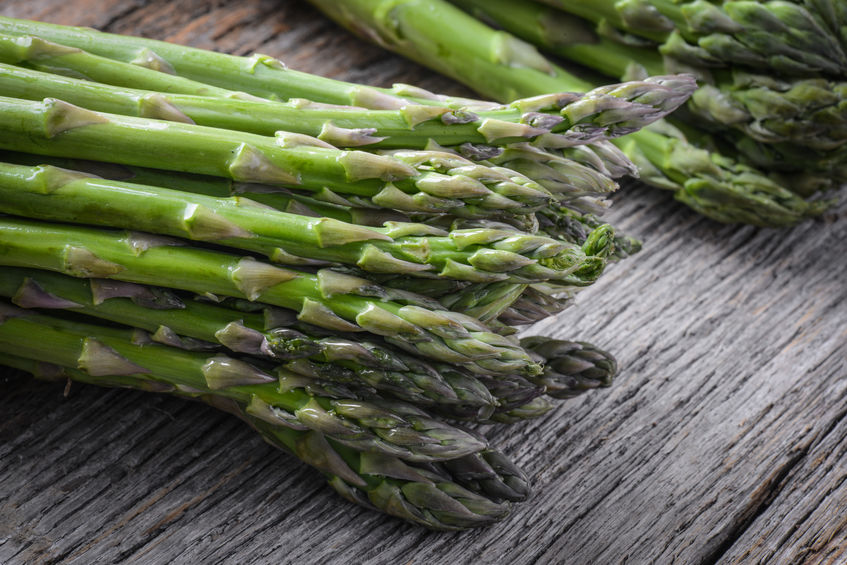Check this out!
Asparagus, a beloved vegetable with its slender stalks and distinct flavor, offers not only culinary delight but also a myriad of health benefits. Firstly, asparagus is a low-calorie vegetable packed with essential vitamins, minerals, and antioxidants. It’s an excellent source of vitamin K, which is crucial for blood clotting and bone health, and it also provides a significant amount of folate, essential for DNA synthesis and cell division, making it particularly important for pregnant women. Additionally, asparagus contains high levels of vitamins A and C, both known for their immune-boosting properties and ability to promote healthy skin.
Moreover, this versatile veggie is rich in fiber, aiding in digestion and promoting a healthy gut microbiome. Its unique combination of nutrients also contributes to reducing the risk of chronic diseases such as heart disease and type 2 diabetes. Asparagus is notably rich in antioxidants like flavonoids and polyphenols, which help combat oxidative stress and inflammation in the body, thus reducing the risk of chronic conditions.

What About Cooking Asparagus?
Cooking asparagus can alter its nutrient profile slightly, but it doesn’t necessarily diminish its overall health benefits. While some water-soluble vitamins like vitamin C may be reduced during cooking, other nutrients such as vitamin A, vitamin K, and folate remain relatively stable. Additionally, cooking can make certain nutrients more bioavailable, meaning they’re easier for the body to absorb and utilize.
For example, cooking asparagus breaks down its tough cell walls, making it easier to digest and allowing the body to access nutrients more efficiently. Steaming or lightly boiling asparagus preserves more of its nutrients compared to methods like frying or overcooking, which can lead to nutrient loss.
Furthermore, cooking asparagus can enhance its flavor and texture, making it more appealing and enjoyable to eat. Whether lightly steamed, roasted, or grilled, cooking methods can complement the natural taste of asparagus while retaining many of its health benefits.
In conclusion, while cooking may alter the nutrient content of asparagus to some extent, it doesn’t necessarily detract significantly from its overall health benefits. Enjoying asparagus as part of a varied and balanced diet, whether raw or cooked, can still provide valuable nutrients and contribute to overall well-being.
Pickled Asparagus Canning Recipe
Makes about 6 pints or 3 quarts
A great side to a frothy beer or an excellent alternative to celery in a Bloody Mary! If you would prefer a non-alcoholic splendor, pickled asparagus taste excellent in a salad, an excellent addition to a relish tray or alongside a hamburger fresh off the grill.
Ingredients
- 7 pounds fresh asparagus
- 5 cups white vinegar
- 5 cups water
- ½ cup pickling or canning salt
- 6 garlic cloves
- 3 teaspoons dried dill seeds or 6 fresh dill flower sprig
- 3 teaspoons mustard seeds
- 3 teaspoons crushed red pepper flakes (optional)
Instructions
- As usual, prepare all of your jars ahead of time and have your lids and rings setting in boiled water.
- In a large stainless steel stock pot, combine vinegar, water and salt to create the picking brine. Bring to a boil, stirring to dissolve the salt. Boil for 5 minutes, then remove from heat.
- Place the following in each pint jar; one garlic clove, ½ teaspoon dill seeds, or 1 fresh dill flower sprig, ½ teaspoon mustard seeds, and ½ teaspoon of hot pepper flakes if using. If using quart jars, add two garlic cloves and double each seasoning.
- Next, raw pack the asparagus spears, flower tip down, into each jar leaving a 3*4-inch headspace. Be sure to really pack them in there tight!
- Ladle hot brine into jars filling to a 1/2-inch headspace. Remove any trapped air pockets and add additional brine to maintain the 1/2-inch headspace.
- Using a warm wash cloth dipped in vinegar, wipe each jar rim. Place lids and rings on each jar and hand tighten.
- Place jars in water bather and cover with warm/hot water. Process the jars for 10 minutes. Remember, processing time doesn’t begin until the water is at a full rolling boil.
Recipe Tip: If you run out of brine, cut the ingredient list in half and create more bring to finish filling jars accordingly. Never fill your remaining jars with water – it will lessen the acidic level and cause food to spoil.
Happy Canning!
xo
Diane, The Canning Diva®
www.canningdiva.com



